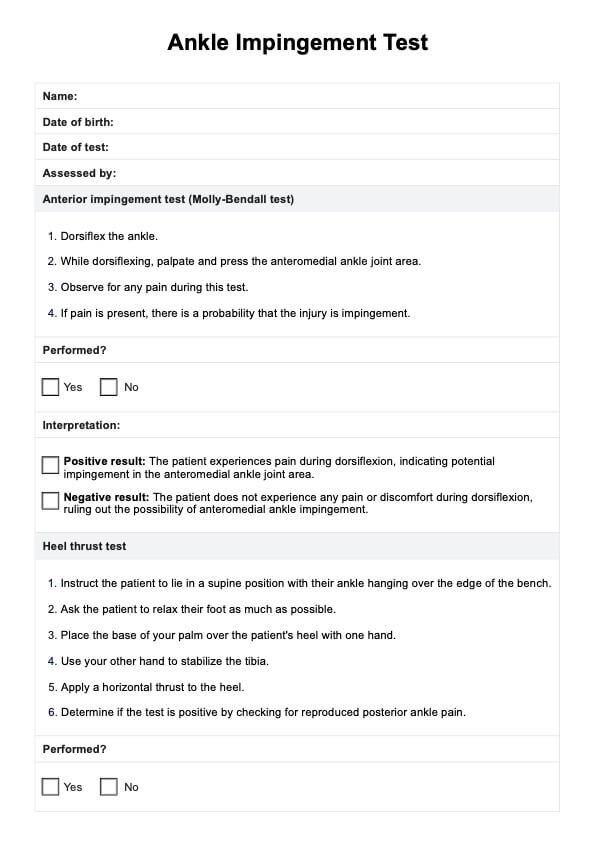Yes, you can walk with ankle impingement, but it may be painful, especially during activities that involve extending or flexing the ankle beyond its comfortable range of motion.

Ankle Impingement Test
Learn about the Ankle Impingement Test, including how it's conducted, symptoms it identifies, and steps for effective diagnosis.
Ankle Impingement Test Template
Commonly asked questions
Risk factors for ankle impingement include repetitive ankle use in sports like soccer or basketball, previous injuries such as ankle sprains, and anatomical abnormalities that increase joint stress.
To strengthen ankle impingement, engage in physical therapy exercises that focus on improving range of motion, strengthening the muscles around the bony posterior ankle impingement, and enhancing overall ankle stability, including ankle dorsiflexion, plantar flexion, and gentle resistance training.
EHR and practice management software
Get started for free
*No credit card required
Free
$0/usd
Unlimited clients
Telehealth
1GB of storage
Client portal text
Automated billing and online payments











